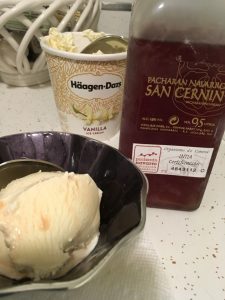Article by Lauren Walsh

Have you traveled to Spain? If so, you’ve likely visited the bustling metropolis of Madrid or the sophisticated streets of Barcelona; perhaps you’ve wandered through the towns of Andalucía, enchanted bythe plaintive notes of Flamenco guitar floating on the breeze. But there’s another place, nestled in the northeast corner, where nature preserves sit next to world-class vineyards. It’s called Navarra, and it has a real story to tell.
The Wine Pairing Weekend group heads to the region this Saturday, April 14th, to discuss the culture, wines, and food traditions of Navarra. Our host is Gwendolyn from Wine Predator, and you can read her invitation post here.
As we do on the second Saturday of each month, we’ll sync up on Twitter at 11 am ET, following the hashtag #winepw. What follows is equal parts travelogue, history lesson, and gastronomic wanderlust. We’d love for you to join us! Feel free to chime in and add your comments or, if you prefer to just watch and learn, that’s cool, too. Just be sure to add #winepw to your tweets so we can welcome you.
A Brief History of Navarra
Navarra was once an independent kingdom that stretched from Bordeaux to Barcelona. In fact, a series of French monarchs ruled the realm in the middle ages, permanently linking the cultures together. Wine has been made in Navarra since Roman times when just enough was made to satisfy the needs of the occupying armies. Consumer demand for wine came later, rising with the flood of pilgrims traveling to Santiago de Compostela via the Route of Saint James.
In the 1800s, when phylloxera decimated the vineyards of nearby southern France, vintners in Navarra stepped in to assist: much of their production was sold to French growers, helping keep their trade afloat. That is, until phylloxera made its way into Spain, and laid waste to the vineyards there.